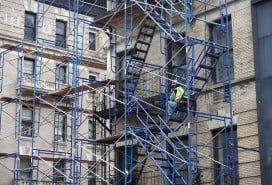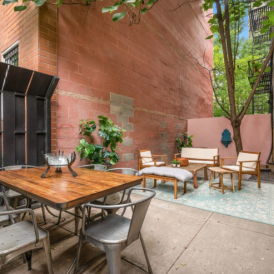NYC Renovation Chronicles: How to avoid change orders

Anyone who has ever renovated a house or apartment has had to deal with change orders, those nagging adjustments to construction cost based on unanticipated conditions: The contractor had no idea he was going to find a pipe in the wall, now has to have a plumber come in and move it, and will therefore charge more for the additional work.
In theory, change orders may either increase or decrease the construction cost, but as any renovator will tell you, a credit from a contractor is about as rare as a rent reduction. And unlike during the bidding process – when competing contractors have incentive to keep costs down – change order prices are set without competition. As a result, change orders often lead to battles between the contractor – who feels he is entitled to what he wants to charge – and the design team, which often feels the charges are exorbitant.
Finding common ground takes time and taxes everyone’s patience, so it is best to avoid change orders as much as possible.
Here are a few tactics:
1. Provide detailed drawings
A contractor calculates his price based on a set of construction documents and the price can only be as specific as the drawings. If a built-in desk is indicated as a rectangle without any details drawn, your contractor is going to make some assumptions about what it is, and chances are, he is going to assume it is a lot less detailed than your designer. If during construction, your interior decorator casually mentions zebra wood veneer and custom hardware when your contractor assumed paint and plastic pulls, well, ka-ching ka-ching, that’s a change order.
2. Change your mind earlier rather than later
Changing the design during construction will almost always have an impact on price. Naturally, if you decide to add a shower to the powder room during construction, you should expect to receive a change order for the new work. But let’s say you relocate the shower from one side of the bathroom to the other. Depending on how far along in the process the work is for the original design, there might be an additional plumbing cost, not to mention the other components of the design that might need to be modified: tile, stone, framing, ceilings, lighting, and so forth. I have had contractors issue change orders – I kid you not – for additional screws.
3. Find out what’s behind your walls before your contractor does
There is a standard clause contractors write into their contracts indicating that they are entitled to additional cost for work associated with site conditions of which they are not aware. So, for example, if in raising a ceiling you were to discover a beam that needed to be relocated, there would be a change order associated with that work. The same would hold true for plumbing pipes, intercom lines, gas runs and sprinklers.
The only way to avoid such change orders is to design around them before construction begins. Speak to your super about your intentions and find out if anyone has done similar work, and if necessary, have probes made in all surfaces to be removed to be sure there are no surprises. Just bear in mind that some conditions are difficult to foresee no matter how much homework you do.
In a recent townhouse renovation I worked on, despite probes indicating the contrary, an underground stream was discovered running beneath part of the cellar. In that case, the scope of work involved lowering the basement. The resulting change order was difficult to dispute.
4. Get your materials to the jobsite on time
Certain products have long lead times, meaning that there is a long delay between when they are ordered and when they arrive on the jobsite. If your contractor has to keep his electrician or plumber around for a few extra days because the Italian tile you ordered is on a cargo ship in the Atlantic, or the German plumbing fixtures are stuck in customs, be prepared: Your materials will arrive... with change orders.
5. Beware of vague alteration agreements
Some buildings have very specific alteration agreements where all renovation requirements, from delivery to final clean up, are clearly laid out. In buildings with vague or even no alteration agreements, where responsibilities are not spelled out, a management company or board can impose a variety of unexpected demands on a job.
A client of mine, at odds with the board of a small building for reasons never clear to me, was forced to repaint and re-carpet the public hall in response to unfounded accusations that the contractor had damaged the space. That same contractor was asked to go through an exhaustive approvals process with the management company for the most minimal of changes, delaying the job significantly. Despite my feeling that the contractor was entitled to substantial additional charges, we were lucky to have received only a couple minor change orders.
Which just goes to show you: on top of everything else, it always helps to hire an honest, understanding, trustworthy contractor.
Next up: What your contractor thinks of you.
David Katz (www.KATZarch.com) has been practicing architecture in New York City for the last 20 years. Detail oriented, nervous and a little neurotic, he specializes in co-op and condo renovations.
Disclaimer: Information provided herein is not to be construed as professional advice. Readers are urged to consult with a licensed architect regarding their specific circumstances prior to undertaking any renovation work. (We do not want any buildings falling down!)
























